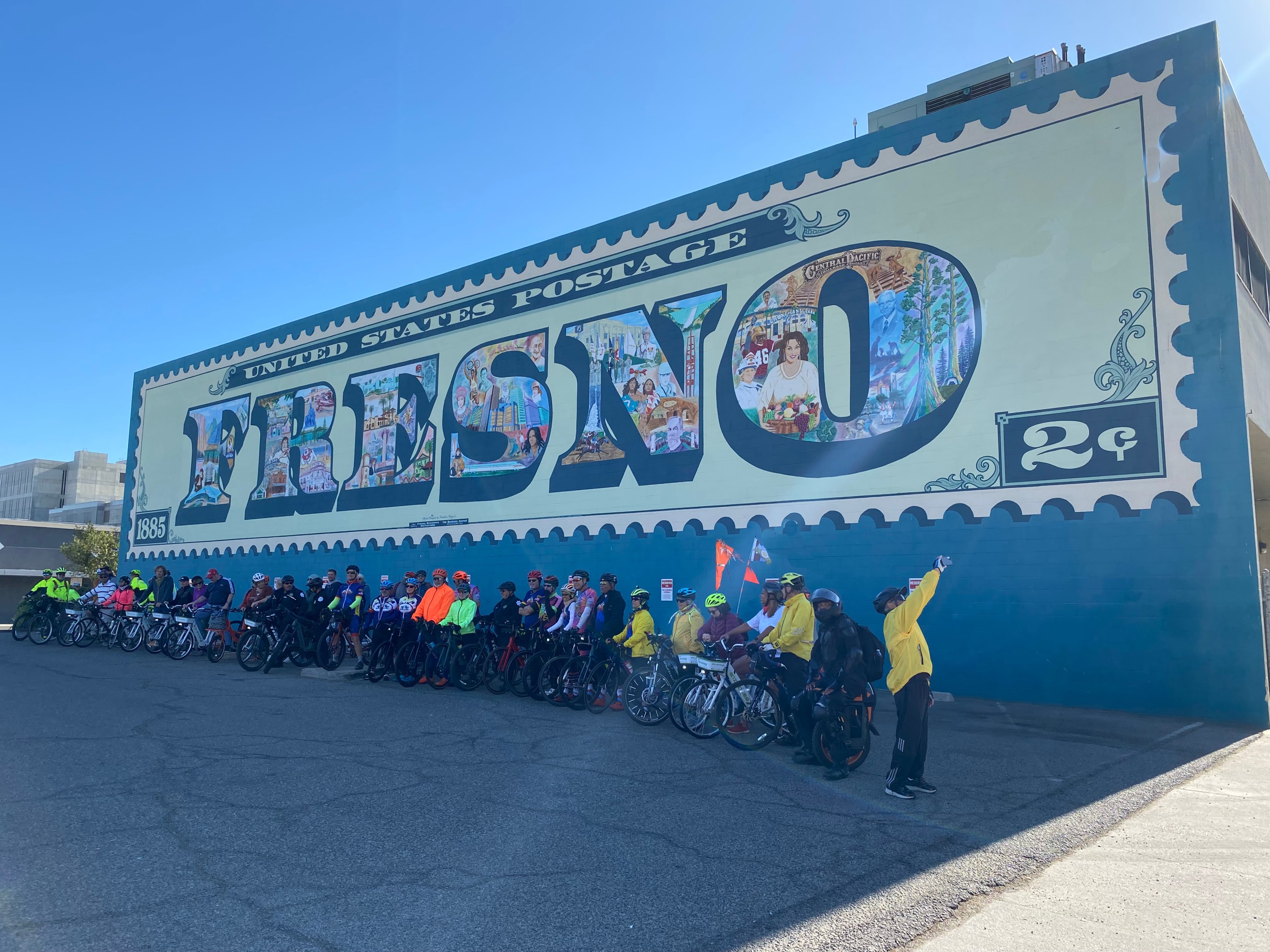The fifth most populous city in California - that would be Fresno - hosted an international transportation innovations summit last week. Keynote speaker Gil Peñalosa encouraged city leaders to embrace making life in Fresno enjoyable and fun. "Playfulness and fun are what will make future cities economically competitive and attract residents and jobs," he said.
"Fun is not a frivolity," he said. Fun and play not only positively affect mental and physical health, they are key to a city's economic prosperity. "And the only way people in Fresno will be physically active is if they walk, bike, and play as an everyday part of life," said Penalosa. He described a future Fresno full of trees, parks, and walkable neighborhoods, easily accessible by rail from other parts of the state, offering interesting destinations for visitors and residents alike.
The thing is, Fresno already is all of that; most people just don't seem to notice. This reporter took a bike on the San Joaquin train to Fresno, arriving on schedule right in downtown and a few blocks from many easily reachable and fun things - including the summit, which took place in a corner of the vast Convention Center. It was easy to reach restaurants and breweries, tour the impressive public art on Fulton Street and in the Mural District (including a sculpture by Pierre-August Renoir), ride with Fresno's Bike Party on a warm moonlit night, take in a street fair and a well-stocked record shop in the Tower District (hosting a Taylor Swift listening party at midnight), and explore some of the future high speed rail infrastructure going in near downtown. The bike rides were short, flat, and on quiet streets, and the fall weather was marvelous. Longer bike rides beckoned - Fresno offers a lot of recreational paths and trails, with more coming - but even within its inner bounds, the city offered plenty to enjoy.
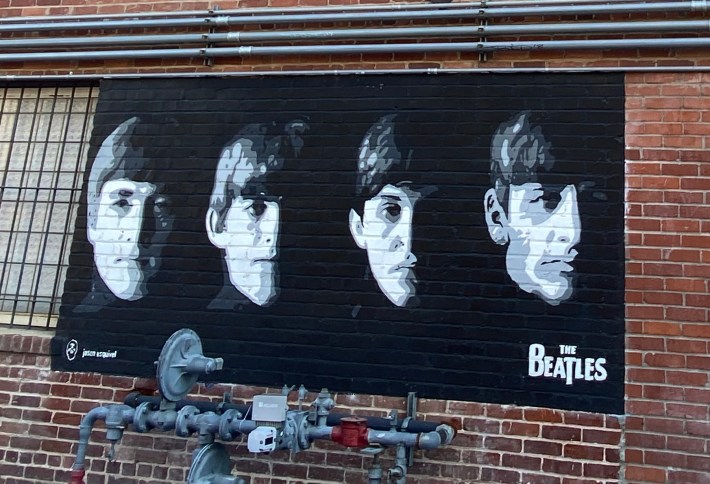
In some ways Fresno seems to be waiting - or rather, to be gearing up for - something better. Numerous planning grants have set the stage for exploring what residents want - those parks and that walkability, and better transit. More grants coming online will help build out infrastructure in the Chinatown area in preparation for development around the future high speed rail station.
Some of the planning has already brought results, encouraging the building of new infill housing, and in the process creating a number of truly vibrant districts - to employ an overused but in this case accurate term. These are exciting and beautiful areas, if still a bit rough at the edges: the Mural District has brought new housing and tons of public art. The Brewery District has several new outdoor beer-drinking spaces, with new restaurants that fill up their parklets on weekend nights.
But the "rough around the edges" part is real. There are vast areas of neglected and hollowed-out spaces between downtown and the well-off northern suburbs - full of empty commercial buildings, large parking lots with empty stretches of asphalt wasteland, weed-filled empty lots that clearly used to contain something - houses, or stores.
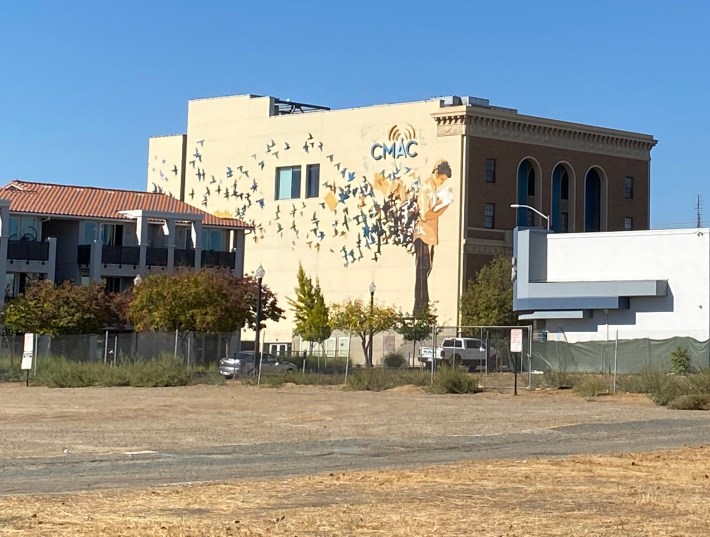
But these areas are not empty. Lots of people live here, in aging houses and apartments, navigating wide, fast streets and those giant empty parking lots. It feels like the emptying out of inner Fresno was intentional, a way to create a buffer between the rich suburbs and the historic city. That's been going on for a long time, no doubt helped by the pandemic but predating that disaster by many years. Fresno has been tearing down its history for a while.
And the ongoing efforts to "revitalize" Fresno, as seen in the downtown districts, have a lot of ground yet to cover. According to Mayor Jerry Dyer, who spoke at at last week's summit, the city of Fresno is building sidewalks, repaving, and adding street lighting and signals in the Chinatown district. This is to prepare for future development in an area that is now largely empty, save for the historic Hotel Fresno, which has been vacant for some forty years but is slated to open soon as affordable housing (although it is currently fenced off and abandoned-looking from the outside). The old train depot in Chinatown has been taken over by the California High Speed Rail Authority, which fixed it up as a headquarters but cut off public access while the streets and railroad around it are worked on.
But there is little sign of why the area is called Chinatown, its history thoroughly erased in another revitalization effort now fading into the past. On a recent Saturday morning, there wasn't much more activity in the area than a gardener trimming bushes in an empty parking lot and a lone bicyclist picking their way through construction barriers.
Even the Fulton Street Mall, which was reopened to cars several years ago, seems largely unchanged except that now cars can drive on it. That switch threatened the livelihood of the small businesses in the mall that catered to a largely Mexican clientele (restaurants and clothing stores, mostly - a great place to pick up a fine guayabera or a cowboy hat), and some of them were likely hit hard again by the pandemic. Today, though, many of those businesses are still there, and it doesn't look like new businesses are clamoring to join them.
The summit itself featured a delegation from Fresno's sister city Münster, Germany, after city representatives and advocates had traveled there last summer. After attending a few summit-related events in the far northern reaches of the city, the German visitors said they missed walking and biking everywhere; so they walked to the meeting place of Bike Party, a short bike ride of about a mile but perhaps too long of a walk for most Fresnans.
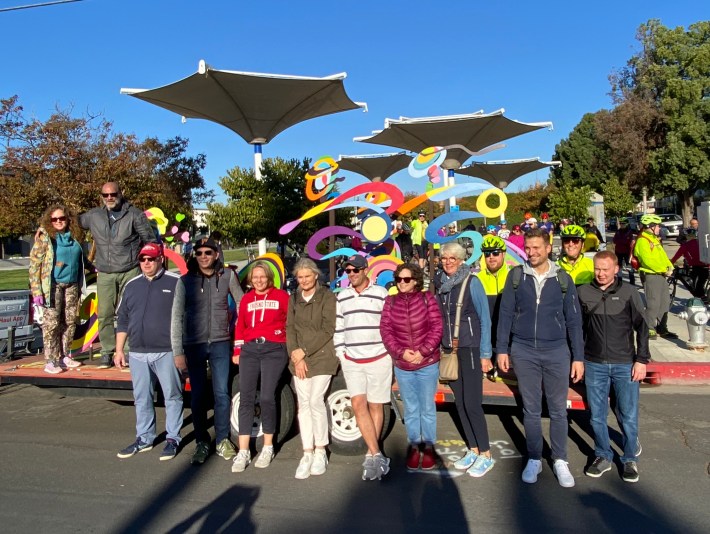
Mayor Dyer told the summit crowd about work being done in Fresno to improve walking and biking and transit. In addition to the infrastructure being built in Chinatown, he said the city has a $500,000 grant for Vision Zero work. "We are already putting in road diets and protected bike lanes," he said, and work is proceeding on the long-awaited Midtown Trail from Fresno's Manchester Transit Center to Clovis, connecting to existing networks of trails in that area.
The city is also about to launch a new trolley service between downtown and City College. The free service, called Hop, will run at first on Thursdays, Fridays, and Saturdays, and offer people an easy way to get around from while eating and drinking and maybe attending Taylor Swift listening parties.
Dyer said the city has been able to use funding from Measure P, a local sales tax that brings in about $40 million per year for parks and trails, as well as Measure C, which is a countywide half-cent sales tax that is mostly for roads. Measure C, up for renewal in 2027, has already been the subject of some wild debates.
One summit session focused on the California High Speed Rail program. Fresno will be one of the first areas to benefit from the service, which will launch sometime after 2030 with a route from Bakersfield to Merced, with a connection to the ACE train into the Bay Area. Four stations in the Central Valley are currently being planned, including Fresno's. That new infrastructure in Chinatown is one of the ways the city is lining up to be ready for future development when the service launches.
Representatives from CAHSRA talked about challenges they have faced during early phases of construction, including the need to relocate utilities and help some of the businesses who gave up parcels or parts of parcels but still need to meet city requirements like landscaping and setbacks on now-smaller lots.
CAHSRA and the city are also focusing on how to integrate the new stations with local transit and bike networks, and ensuring they are walkable. All of the stations being planned are in downtowns, to better serve city residents and to boost local development. Fresno's station will be considered the "front door" to the community, said Margaret Cederoth, CAHSRA's Central Valley Director of Planning and Sustainability.
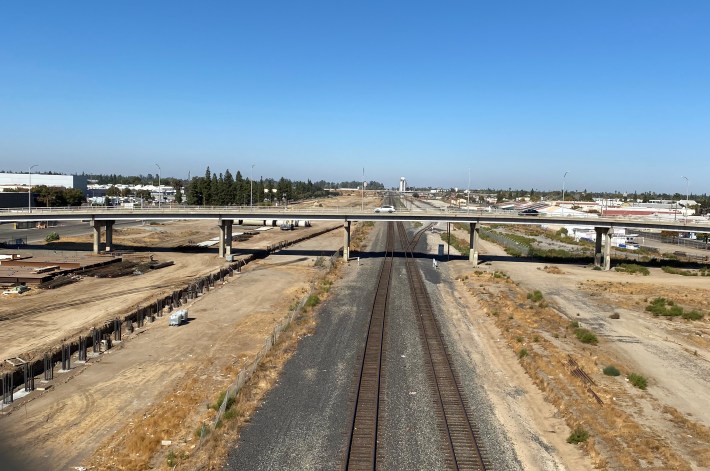
Panelists told attendees they will begin doing public outreach on station design and plans for the trainsets themselves sometime this winter, and urged people to get involved and share their opinions.
Another highlights of the summit was a Bus Rapid Transit tour, led by Drew Wilson, a transportation planner with the city of Fresno, who crammed everyone completely full of information about Fresno, bus rapid transit, and related topics.
Fresno Area Express runs the Q line as a cross-town express bus with some - but not all - of the qualities of BRT. Ten-minute headways means there's no need to check a schedule. Bulbouts at the bus stops allow the Q to pick up riders without pulling over to the curb. Signal priority - where traffic signals recognize the bus as it approaches and give it a green light - speed up service by making sure the Q is not stuck at lights.
Pre-board fare payments should mean faster boarding (but on the Q, that aspect of BRT is hampered by the need to insert - and retrieve - a ticket). The city also did not set aside a bus-only lane for the Q, although there seems to be plenty of room especially on the wider roads as one heads north. Wilson said the hope is that bus-only lanes can be added later; maybe one day the BRT could inform the creation of a light rail network serving all parts of the city.
Meanwhile the Q was full. I spoke to a woman who has been riding the bus because she hasn't been able to pay for her car insurance. "This one is fast," she said. "It would be good if the other buses came more often too."
Wilson told the people on the tour that Fresno's average bus rider is a young, low-income mother of two. That is, the service is absolutely crucial for them.
A speedier trip on a bus-only lane would have been helpful, as the ride north along Blackstone Avenue took longer than planned and had to be cut short at a bleak empty parking lot halfway across the city instead of reaching the Manchester Transit hub as planned.
Fresno may have a long way to go to solve some of its problems, but it is headed in the right direction. Peñalosa urged the city to do two things: Lower speed limits throughout, and create a network of bikeways, connecting those that exist and serving new areas.
"Do it - now!" he said. "We know what to do; we know how to do it. The obstacles are not technical," he said, "they are political. Making those two simple changes will bring all the benefits: economic, physical and mental health, safety, better air quality - and fun," he said.

